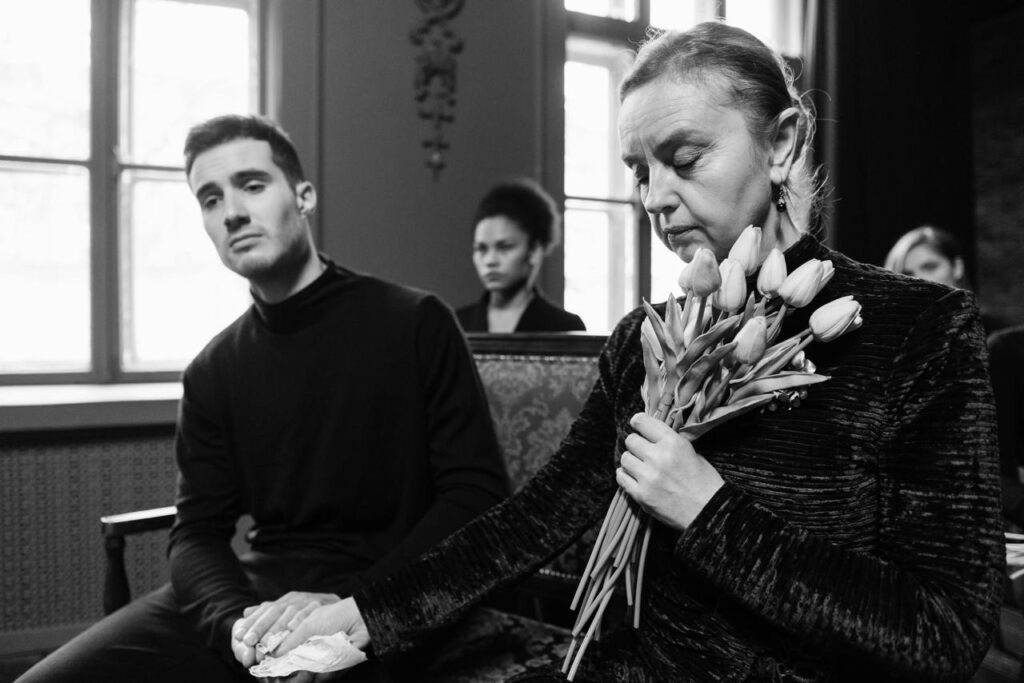Funeral services are a significant event for both the family and friends of the deceased. Whether you are attending a funeral as a guest or are involved in the planning process as a family member, it’s important to understand what to expect. Funerals can be emotional and overwhelming, but knowing what to anticipate can help you navigate the experience with respect and understanding.
1. The Arrival at the Funeral Home
For many people, the funeral service begins at the funeral home, where the body is usually prepared and placed in a casket or urn. If you’re attending a visitation or wake before the funeral service, you’ll arrive at the funeral home where you can express your condolences to the family.
Upon arrival, you will likely be greeted by funeral home staff who will guide you to the visitation area. It’s common to see a display of photographs, flowers, and personal items that reflect the life of the deceased. During this time, people usually offer support to the family, share memories, and pay their respects.
2. The Start of the Funeral Service
Services provided by funeral homes typically begin with a formal procession or opening remarks from the officiant. The officiant could be a religious leader, a family member, or a celebrant who is chosen to conduct the service. The ceremony will often begin with a greeting and a short introduction about the deceased person’s life and legacy.
If the service is religious in nature, the officiant may begin with prayers or a scripture reading, depending on the deceased’s faith and the family’s preferences. For non-religious services, the officiant might offer a tribute to the deceased, focusing on their life, personality, and the impact they had on others.
The mood during this part of the service will vary depending on the type of service. For example, a traditional service might feel solemn, while a celebration of life ceremony could feel more uplifting.
3. Eulogies and Tributes
One of the most important parts of a funeral service is the eulogy, a speech given to honor the life of the deceased. Family members, close friends, or even colleagues may be invited to share their memories and personal stories about the deceased. This is a meaningful time for those who knew the individual to reflect on their impact and legacy.
During this time, the funeral home staff may help ensure that the ceremony runs smoothly, keeping track of the schedule and helping those who need assistance with the proceedings.
4. Music and Readings
Music plays a significant role in many funeral services, and it can set the tone for the event. Whether the service is religious or secular, music can evoke strong emotions and provide comfort. Songs that the deceased loved or that reflect their personality may be played during the service.
In addition to music, readings are often included in the service. These could be passages from religious texts, poems, or other meaningful excerpts that hold significance for the deceased and their family. These readings offer a moment of reflection for everyone in attendance and provide a sense of connection to the deceased’s values and beliefs.
5. The Funeral Procession
Following the ceremony, the funeral procession often proceeds to the burial or cremation site. If the body is being buried, the procession will typically travel to the cemetery. Funeral homes arrange for transportation of the casket, with the family following in their own vehicles or in a funeral home vehicle.
At the burial site, the casket or urn will be lowered into the ground, and attendees may gather around for a final farewell. In many cases, people will be invited to place a flower, soil, or other items on the grave as a gesture of respect and remembrance.
6. The Burial or Cremation Ceremony
For a burial service, the moment the casket is lowered into the ground is a somber but essential part of the ceremony. It marks the final step in the deceased’s journey and provides an opportunity for attendees to say a final goodbye. This may be followed by a prayer or brief speech, depending on the wishes of the family and the nature of the service.
Regardless of whether the service involves a burial or cremation, this is typically the most emotional and intimate part of the funeral, where family and friends can reflect and say their goodbyes.
7. The Reception or Wake
After the formal service, it is common to hold a reception or wake to continue celebrating the deceased’s life. This gathering allows friends and family to share memories, offer condolences, and provide support. It’s often a more relaxed environment where people can come together in solidarity.
By knowing what to expect, you can pay your respects and participate meaningfully in the funeral service, helping to celebrate and honor the life of the deceased in a thoughtful and respectful way.

